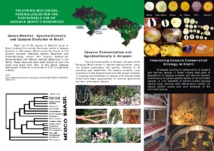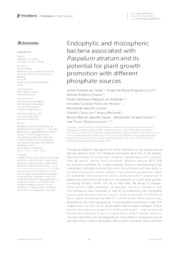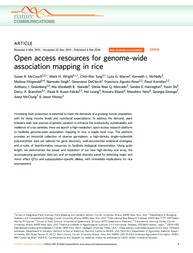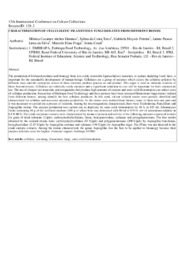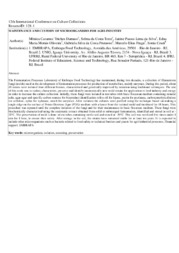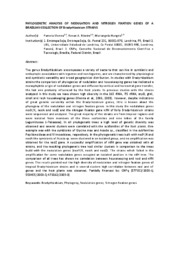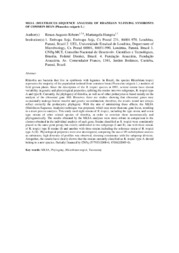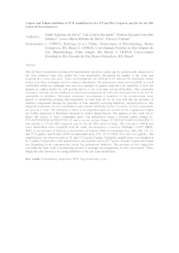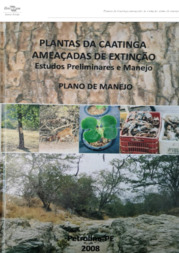Search Publications
Filter by:
| |
| Author(s): PAULA, A. F. DE; CRUZ, F. DE P. N.; DINATO, N. B.; MORAES, A. C. P. DE; BARIONI JUNIOR, W.; BERNARDI, A. C. de C.; VIGNA, B. B. Z.; FAVERO, A. P.; LACAVA, P. T. The genus Paspalum belongs to the family Poaceae and has several species that are native to Brazil. The Paspalum Germplasm Bank (GB) of the Brazilian Agricultural Research Corporation comprises approx... ... |
| Author(s): MCCOUCH, S. R.; WRIGHT, M. H.; TUNG, C.-W.; MARON, L. G.; MCNALLY, K. L.; FITZGERALD, M.; DECLERCK, G.; AGOSTO-PEREZ, F.; KORNILIEV, P.; GREENBERG, A. J.; NAREDO, M. E. B.; MERCADO, S. M. Q.; HARRINGTON, S. E.; SHI, Y.; BRANCHINI, D. A.; FALCAO, P. R. K.; LEUNG, H.; EBANA, K.; YANO, M.; EIZENGA, G.; SINGH, N.; MCCLUNG, A.; MEZEY, J. Increasing food production is essential to meet the demands of a growing human population, with its rising income levels and nutritional expectations. To address the demand, plant breeders seek new so... ... |
| Author(s): DAMASO, M. C. T.; TERZI, S. da C.; PEREIRA, G. M.; SILVA, J. P. L. da; FRAGA, M. E.; COURI, S.
|
| Author(s): DAMASO, M. C. T.; TERZI, S. da C.; SILVA, J. P. L. da; OLIVEIRA, E. M. M.; FRUTUOSO, G. S. da C.; FRAGA, M. E.; COURI, S.
|
| Author(s): MENNA, P.; RIBEIRO, R. A.; HUNGRIA, M. The genus Bradyrhizobium encompasses a variety of bacteria that can live in symbiotic and endophytic associations with legumes and non-legumes, and are characterized by physiological and symbiotic ver... ... |
| Author(s): RIBEIRO, R. A.; HUNGRIA, M. Rhizobia are bacteria that live in symbiosis with legumes. In Brazil, the species Rhizobium tropici represents the majority of the population isolated from common bean (Phaseolus vulgaris L.) nodules... ... |
| Author(s): SILVA, G. A. da; BERNARDI, T. L.; SCHAKER, P. D. C.; MELLO, L. M. R. de; VALENTE, P. The off-flavor metabolites produced by nutritionally fastidious yeasts can be economically disastrous to the wine producer since they render the wine unpalatable, decreasing the quality of the wine, a... ... |
| |
| |
Observation
Some of Embrapa's publications are published as ePub files. To read them, use or download one of the following free software options to your computer or mobile device. Android: Google Play Books; IOS: iBooks; Windows and Linux: Calibre.
Access other publications
Access the Agricultural Research Database (BDPA) to consult Embrapa's full library collection and records.
Visit Embrapa Bookstore to purchase books and other publications sold by Embrapa.

